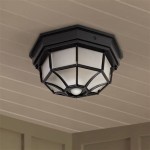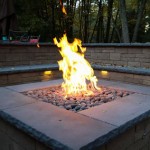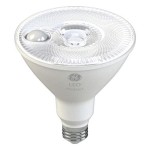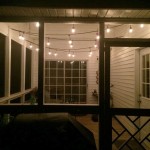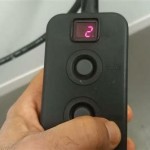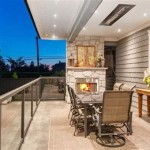What Gauge Wire Do I Need For Outdoor Flood Lights?
Selecting the correct wire gauge for outdoor flood lights is crucial for safety and optimal performance. Using a wire gauge that's too small can lead to overheating, voltage drop, and potential fire hazards. Conversely, using a wire gauge that's too large can be unnecessarily expensive and difficult to work with. This article will explain the factors to consider when choosing the right gauge wire for your outdoor flood lights.
Understanding wire gauge is the first step. Wire gauge refers to the thickness of the wire. Lower gauge numbers indicate thicker wires, capable of carrying more current. For instance, a 12-gauge wire is thicker and can handle more current than a 14-gauge wire. Higher gauge numbers represent thinner wires with lower current-carrying capacity.
The primary factor influencing wire gauge selection is the amperage draw of the flood lights. Amperage, measured in amps, represents the amount of electrical current the lights require to operate. This information can typically be found on the light fixture itself or its packaging, often listed as watts. To calculate amperage from wattage, divide the wattage by the voltage. Standard household voltage in North America is 120 volts. For example, a 1000-watt flood light would draw approximately 8.3 amps (1000 watts / 120 volts = 8.3 amps).
Once the amperage is determined, consult an ampacity chart, readily available online and in electrical supply stores. An ampacity chart provides the maximum safe current-carrying capacity for different wire gauges and types. These charts often factor in ambient temperature and wire insulation type, as these variables can affect a wire's ability to dissipate heat.
Distance also plays a significant role in wire gauge selection. Longer wire runs introduce voltage drop, the reduction in voltage that occurs as electricity travels along a wire. A significant voltage drop can diminish the brightness of the flood lights and potentially damage them. For longer distances, a thicker wire with a lower gauge number is necessary to minimize voltage drop.
The National Electrical Code (NEC) provides guidelines for safe wiring practices and should always be consulted when undertaking electrical projects. Local building codes may also have specific requirements regarding wiring for outdoor lighting and should be adhered to. Consulting a qualified electrician is recommended for complex installations or when in doubt about any aspect of the wiring process.
The type of wire used for outdoor flood lights is also important. Outdoor wiring requires weather-resistant and durable materials. Typically, copper wire with THWN insulation is recommended. THWN stands for thermoplastic high heat-resistant, water-resistant, nylon-coated. This type of insulation protects the wire from moisture, sunlight, and extreme temperatures, ensuring longevity and safety.
When planning the wiring layout, consider the path the wire will take. Bury underground wires in a conduit for protection against physical damage and moisture. Conduit is a protective tube, typically made of PVC, that encases the wire. The conduit should be buried at an appropriate depth, according to local codes, to prevent accidental damage from digging or landscaping.
Properly connecting the wires is essential for a safe and functional installation. Use appropriate wire connectors, such as wire nuts, rated for the voltage and amperage of the circuit. Ensure all connections are secure and properly insulated to prevent short circuits and other electrical hazards.
Testing the circuit after installation is vital. Before energizing the circuit, use a multimeter to check for continuity and ensure that all connections are secure. After energizing the circuit, verify that the flood lights operate correctly and that there are no signs of overheating or other issues.
Choosing the correct wire gauge for outdoor flood lights is a critical aspect of a safe and effective installation. Factors such as amperage draw, distance, and environmental conditions must be considered. Adhering to the NEC and local building codes, consulting ampacity charts, and using appropriate wire types and connectors are crucial for a successful project. Careful planning and execution will ensure the long-term performance and safety of your outdoor lighting system.
While this information provides general guidance, specific situations may necessitate further investigation or consultation with a qualified electrician. Always prioritize safety and adhere to all relevant codes and regulations when working with electrical systems.

Electrical What Size Breaker And Wire Do I Need To Run 2 Gfci Receptacles A Flood Light On Exterior Of My House Home Improvement Stack Exchange

Choosing The Right Gauge Wire For Outdoor Landscape Lighting

What Size Wire Should You Use For Your Led Light Bar Ultra Bright Lightz

Wiring 2 Flood Lights Together

Electrical What Size Breaker And Wire Do I Need To Run 2 Gfci Receptacles A Flood Light On Exterior Of My House Home Improvement Stack Exchange

How To Install Flood Lights With Pictures Wikihow

How To Install Flood Lights With Pictures Wikihow

How To Install Flood Lights With Pictures Wikihow

How To Install Flood Lights With Pictures Wikihow

Permanent Wiring Of External Flood Light From A Garage Ceiling Without Conduit Code Check Home Improvement Stack Exchange
Related Posts
